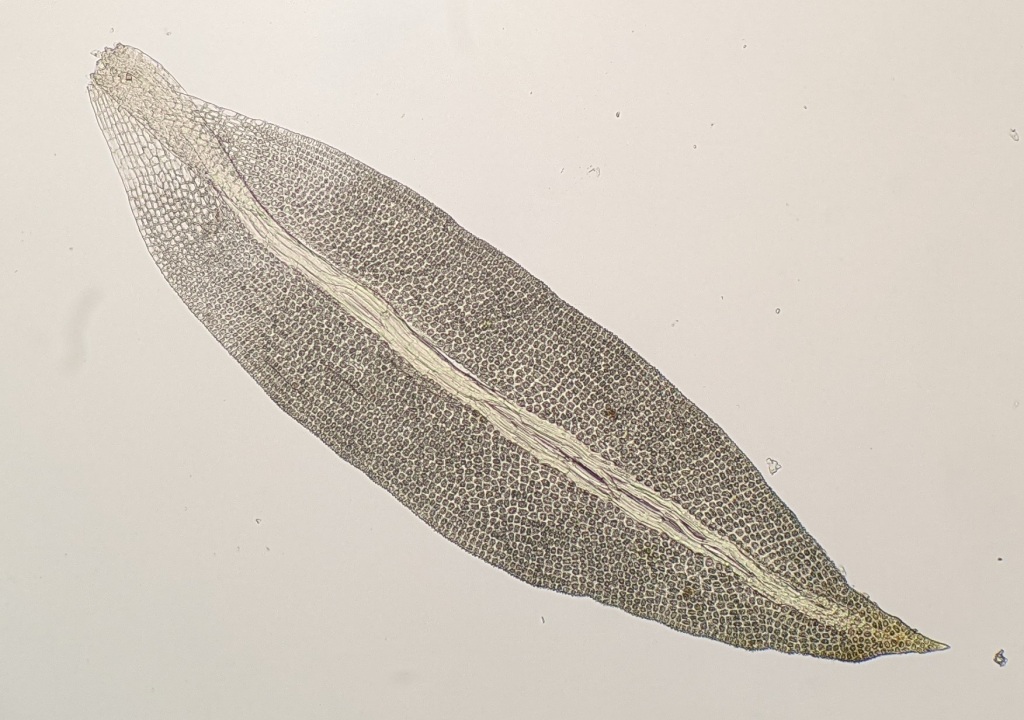Gymnostomum calcareum
Nees & Hornsch.Dense mats on rock or calcareous soil, yellow-green. Stems 1.5–20 mm long, red or orange, tomentose or not. Leaves erecto-patent or spreading when moist, crisped when dry, narrowly lingulate, lingulate or linear, upper leaves 0.5–1 mm long, 0.15–0.2 mm wide; apex rounded, obtuse, acute or apiculate; costa ceasing below apex; margin entire, plane, without a border; laminal cells in apical half subquadrate, isodiametric, 4–11 μm wide, pluripapillose; basal cells rectangular, 7–40 μm long, 5–10 μm wide, longest near costa, hyaline, smooth, extending c. 1/4–1/3 leaf length or confined to near insertion in smaller leaves, extending furthest along costa or equally between margin and costa. Seta to 2.5–5 mm long, pale yellow, untwisted or twisted left. Capsule erect, ellipsoid, oblong or cylindric, straight, 0.65–1 mm long. Operculum rostrate or oblique-rostrate, 0.15–0.5 mm long.
GleP, Brid, VVP, GipP, OtP, WaP, Gold, CVU, GGr, EGL, EGU, WPro, HSF, HNF, OtR, Strz, MonT, VAlp. Usually on rockfaces, often limestone or basalt, in protected sites such as near waterfalls, cave entrances, above waterways or on moist coastal cliffs along and south of the Great Dividing Range, but absent from high altitude. All states and territories. New Zealand, Europe, Macaronesia, northwest Africa, Réunion, Asia, USA, and Mexico.
 Spinning
Spinning
